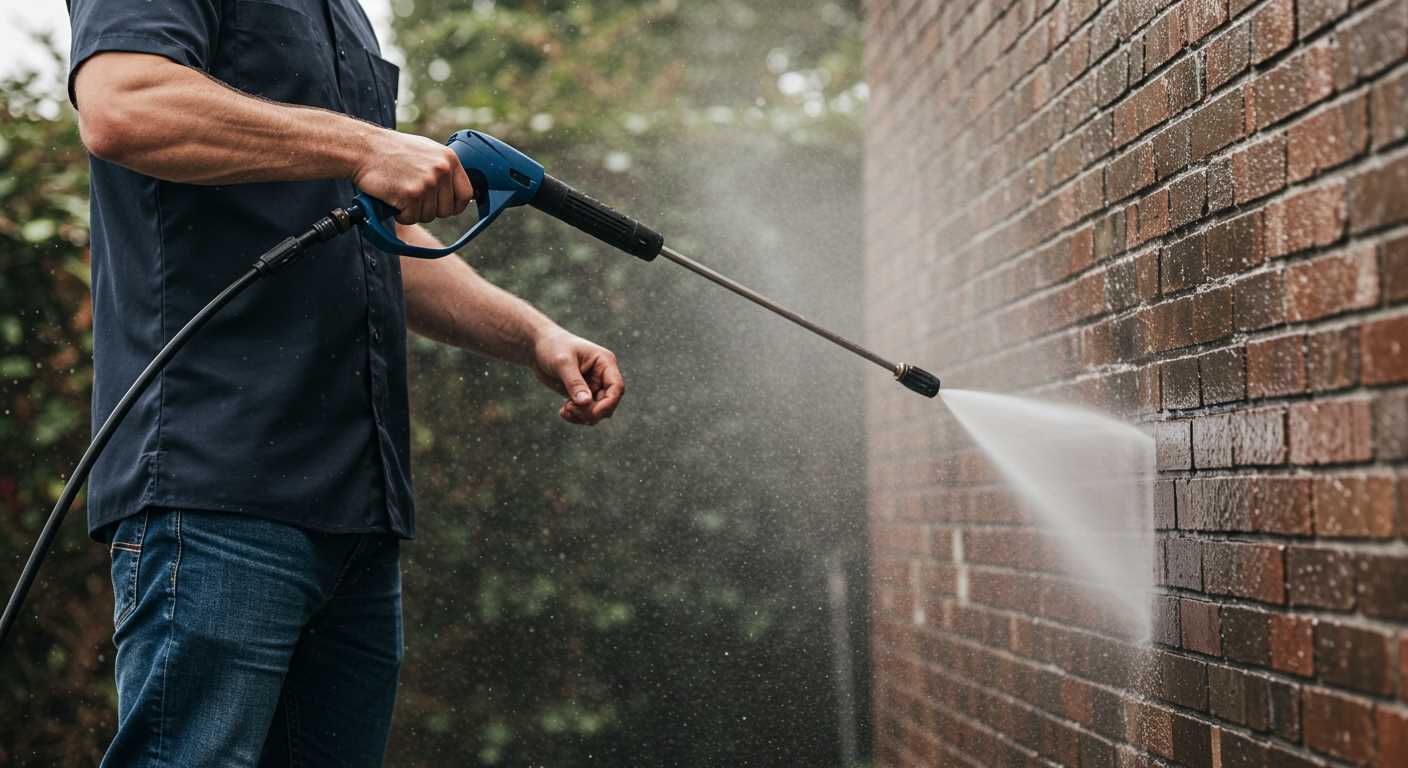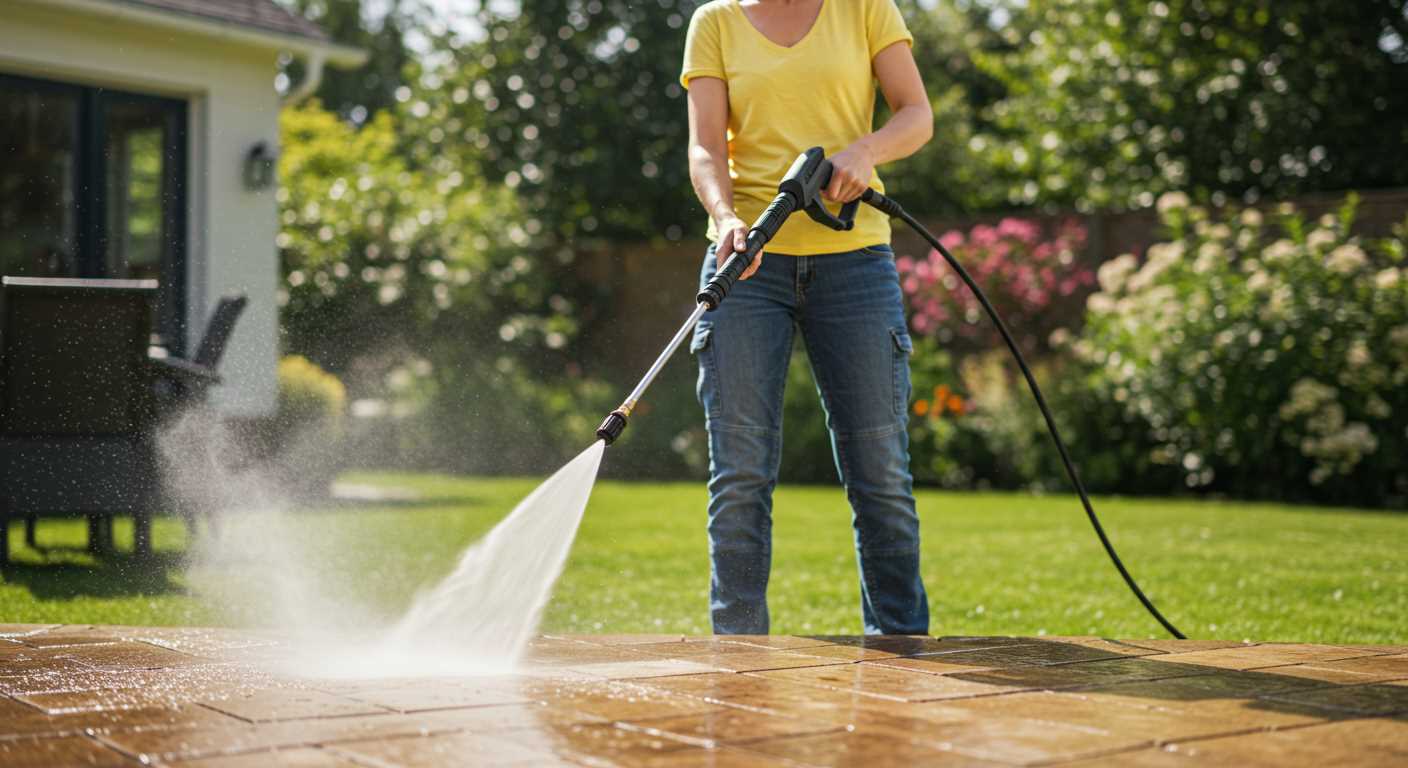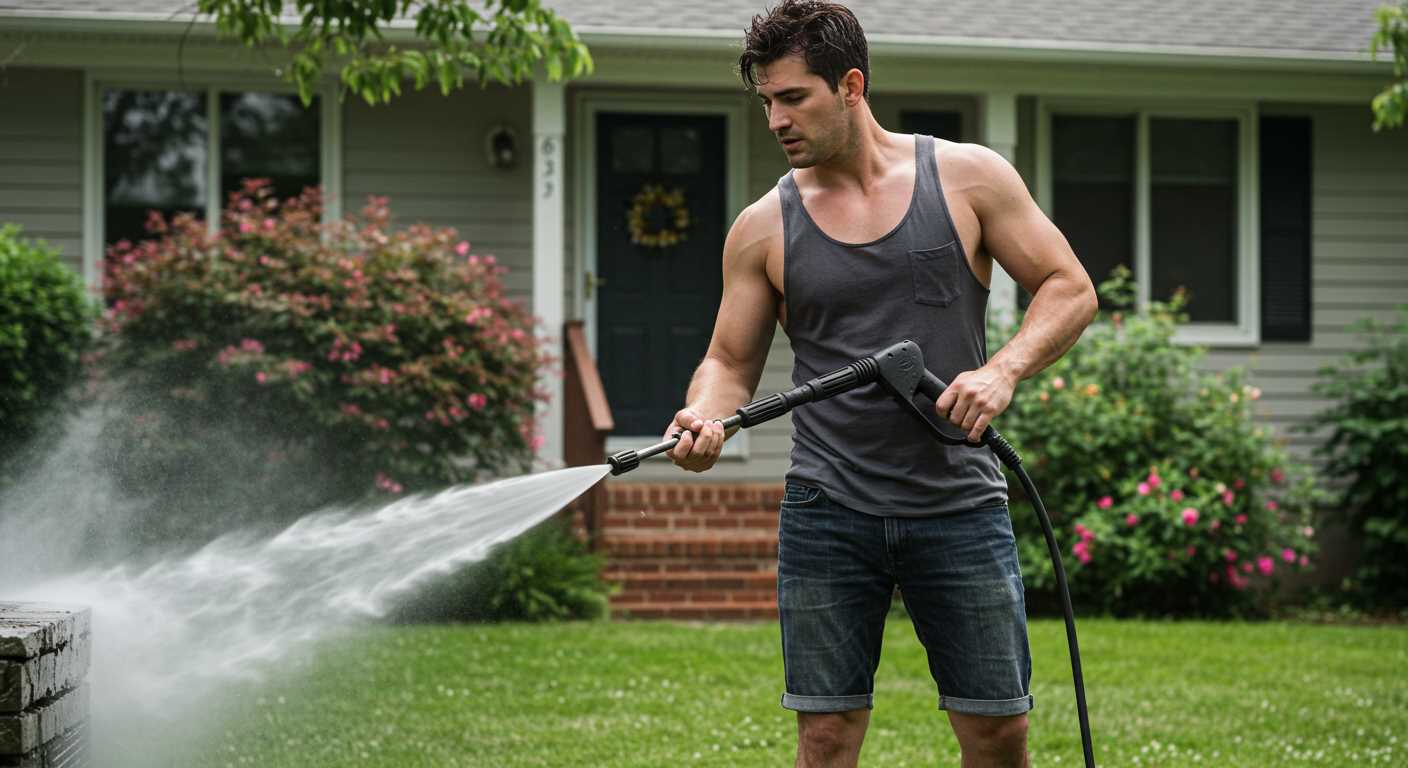



For optimal results in outdoor cleaning tasks, familiarising oneself with the mechanics of a high-pressure cleaning device is paramount. These instruments operate by harnessing the force generated from a motor, typically electric or petrol, to drive water through a series of components. This increased velocity creates a powerful jet that effectively removes dirt and grime from surfaces.
The water from your source enters the unit and is filtered to eliminate impurities before being pressurised. It’s critical to check the filter regularly to ensure consistent performance. A specialised pump is central to this system, converting regular water supply into a concentrated stream capable of dislodging stubborn debris.
At the heart of the operation is the nozzle, which plays a significant role in directing the water flow and adjusting the spray pattern. Different nozzle types can create various spray patterns–from a wide mist for gentle rinsing to a narrow stream for intensive cleaning. Experimenting with these settings can yield favourable outcomes for various surfaces.
To maximise efficiency, ensure that the hose is free from kinks and blockages. Additionally, the correct selection of cleaning detergents can enhance the effectiveness of the high-pressure stream, making the task less labour-intensive. Regular maintenance of all components will prolong the lifespan and maintain optimal functionality of the device.
How the Cleaning Device Functions
When I examine the components of this cleaning tool, I see a straightforward assembly working with precision. The unit consists of several key elements: a motor, an inlet for water, a pump, and a nozzle. The motor activates the pump, which draws in water and generates a high-pressure stream.
Key Components
- Motor: Powers the entire system, converting electrical energy into mechanical energy.
- Water Inlet: A connection point for a garden hose, allowing fresh water to flow into the unit.
- Pump: The heart of the operation, it pressurises the incoming water. Various models have different pump types, but axial or triplex pumps are commonly employed.
- Nozzle: Controls the flow and direction of water. Various nozzle tips create different spray patterns, from fine mist to concentrated jets.
Operating Mechanism
When activated, the motor spins the pump, pulling in water. As the pump moves, it compresses the water, drastically increasing its pressure. Once the desired pressure is achieved, the flow exits through the nozzle. The choice of nozzle affects not only the spray width but also the impact force. Selecting the correct nozzle for your task is crucial for efficiency and safety.
- For surfaces like wood, a wider spray pattern distributes pressure to avoid damage.
- Concrete or brick can handle a narrow, high-pressure stream for effective cleaning.
Regular maintenance of the pump and nozzle ensures longevity. Inspecting for clogs in the nozzle and checking seals can prevent wear and preserve performance. Keeping the water source clean is equally important; debris can lead to damage or a decrease in pressure.
Understanding the Pressure Regulation Mechanism
The regulation of force in cleaning equipment is central to its operation, ensuring water is delivered at optimal levels. A critical component in this system is the pressure relief valve. This device monitors and maintains the desired output by diverting excess water back to the pump when pressure exceeds a set threshold.
Maintaining consistent demand requires a balance between the pump’s output and the fixture or nozzle in use. When the trigger is released, the regulator allows pressure to drop, facilitating a safe and controlled shutdown of the flow. It is imperative to select machinery with high-quality regulation features for durability and reliability.
The design of these devices involves springs and diaphragms, which respond dynamically to fluctuations in usage. When using a narrower nozzle, for instance, water flow diminishes, increasing the force generated by the pump. If unregulated, this could potentially damage the system, which highlights the importance of a robust regulating mechanism.
In some models, adjustable settings allow the operator to change the force according to specific tasks. Adapting the output ensures that delicate surfaces aren’t harmed while tougher stains receive adequate treatment. Familiarisation with these adjustments can significantly improve cleaning efficacy.
Regular maintenance is equally essential. Ensuring that no debris clogs the regulator or its components will prolong the lifespan of the unit. Periodic checks on the relief valve ensure it operates smoothly, ultimately maintaining the safety of the equipment.
Choosing machinery that combines advanced regulation features with ease of use can greatly enhance performance. Understanding this aspect not only aids in making informed decisions but also optimises cleaning outcomes.
The Role of the Nozzle in Water Stream Direction
The nozzle significantly influences the trajectory and shape of the water stream. To optimise cleaning performance, it’s essential to select the right nozzle type for your specific task.
Different nozzles create various spray patterns, affecting both coverage and intensity. Common types include:
| Nozzle Type | Spray Pattern | Recommended Use |
|---|---|---|
| 0-degree | Focused beam | Heavy-duty cleaning |
| 15-degree | Very narrow cone | Concrete, brick, and heavy stains |
| 25-degree | Medium spray | Most surfaces, including vehicles and patios |
| 40-degree | Wide spray | Delicate surfaces, such as wood or painted areas |
| Soap nozzle | Wide flat spray | Application of cleaning agents |
The angle of the spray affects the pressure and reach. A narrower angle delivers higher pressure concentrated on a smaller area, ideal for heavy grime. Conversely, a wider angle distributes water over a larger area, useful for rinsing and lighter cleaning tasks.
Adjustable nozzles allow for quick changes in spray patterns, providing versatility for different jobs. For maximum efficiency, ensure you’re using the appropriate nozzle for the specific cleaning application. This not only enhances performance but also protects surfaces from potential damage caused by excessive pressure.
Trigger Mechanism: Regulating Water Flow and Force
The functionality of a trigger mechanism in cleaning devices directly influences both water movement and the intensity of the stream.
When I press the trigger, several processes occur almost instantly:
- The internal valve opens, allowing water to flow from the source through the hose to the nozzle.
- As I release the trigger, the valve closes, halting the water supply. This responsive action prevents waste and conserves resources.
- If the variable pressure setting is present, pulling the trigger might also adjust the intensity of the flow, providing versatility for different tasks.
It’s critical to understand that the design of the trigger plays a major role in ergonomic use. A well-designed trigger requires minimal effort to operate, reducing strain during extended use. This is particularly beneficial when tackling extensive tasks or large areas.
Fine control over the force not only improves cleaning effectiveness but also enhances safety by allowing the operator to manage the impact of the water effortlessly.
In my experience, a reliable trigger mechanism can significantly enhance user satisfaction and overall performance. Choosing a model with an intuitively designed trigger can make a noticeable difference in the cleaning process.
Components That Affect Performance and Longevity
Investing in a quality cleaning unit involves understanding various components that directly influence performance and durability. One of the most significant factors is the material of the housing. Components made from high-grade plastics or metals resist wear and tear, enhancing lifespan.
The pump mechanism also deserves attention. Triplex pumps, for instance, are known for their efficiency and longevity compared to axial pumps. They handle high pressure better, resulting in consistent water output without excessive strain on internal parts.
Another vital element is the O-ring and seal quality. Durable and properly designed seals prevent leaks, which can lead to pressure loss and operational problems over time. Regular inspection and maintenance of these seals can significantly improve the service life of the entire unit.
Connection fittings must be robust. Brass or stainless steel fittings outperform plastic ones. Their resistance to rust and corrosion ensures a reliable connection under pressure, minimising the risk of failure due to wear.
Also, look into the trigger mechanism. Quality triggers are responsive and sturdy, allowing for precise control without excess strain on the operator’s hand. A smooth trigger mechanism prevents premature wear, ensuring consistent operation.
Finally, consider the hose. A reinforcement layer can significantly extend hose life by resisting kinks and abrasions. It’s essential to choose a product that maintains flexibility while being robust enough for high-pressure applications.
Cleaning Agents and Their Interaction with Pressure Washing

Choosing the right cleaning agent is pivotal. Different surfaces and contaminants require tailored solutions for optimal results. For instance, alkaline detergents work effectively on grease, while acidic formulas are better for mineral deposits. Always check compatibility with equipment to avoid damaging parts.
Surface Considerations

Know your surface. Wood, brick, and metal can react differently to various cleaners. For wooden surfaces, use biodegradable agents to prevent deterioration. On masonry, strong chemical cleaners can cause staining or discolouration. Always perform a patch test on a small area to gauge the effect of any cleaning agent.
Applying Cleaning Agents
Mixing cleaning solutions correctly is crucial. Use the precise dilution recommended on the label. Improperly diluted agents can lead to ineffective cleaning or damage. When applying cleaning agents, utilise low-pressure settings initially to distribute the solution evenly. Allow it time to penetrate the grime before rinsing off with a higher pressure for the best outcome.
Safety Features and Their Importance in Operation
One of the first aspects I assess in cleaning devices is their safety features. An effective model should integrate a safety trigger mechanism. This feature prevents unintentional activation, a crucial consideration, particularly when working with high water flow rates. Always check for a trigger-lock system that safeguards against accidental discharge.
Pressure Relief Mechanism
A reliable release valve is essential for managing excess pressure within the system. This component serves as a safeguard, protecting both the user and the machine from potential damage due to over-pressurisation. Regular inspections of this mechanism ensure prolonged equipment life and safety during operation.
Thermal Protection

In my experience, overheating can lead to significant issues, including component damage. Many models include a thermal cut-off feature that automatically shuts down the unit when it reaches a specific temperature. Familiarising oneself with this feature can prevent hazardous situations and equipment failure.
Wearing appropriate personal protective equipment (PPE) is also non-negotiable. Safety goggles, gloves, and non-slip footwear provide necessary protection against high-speed water jets and slippery surfaces. Always prioritise safety to minimise risks during any cleaning task.







